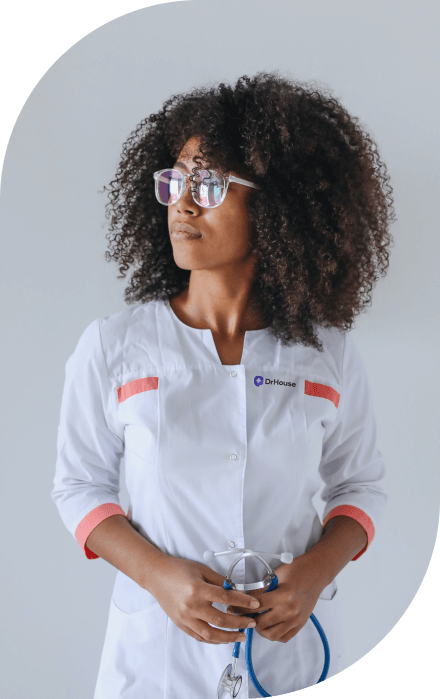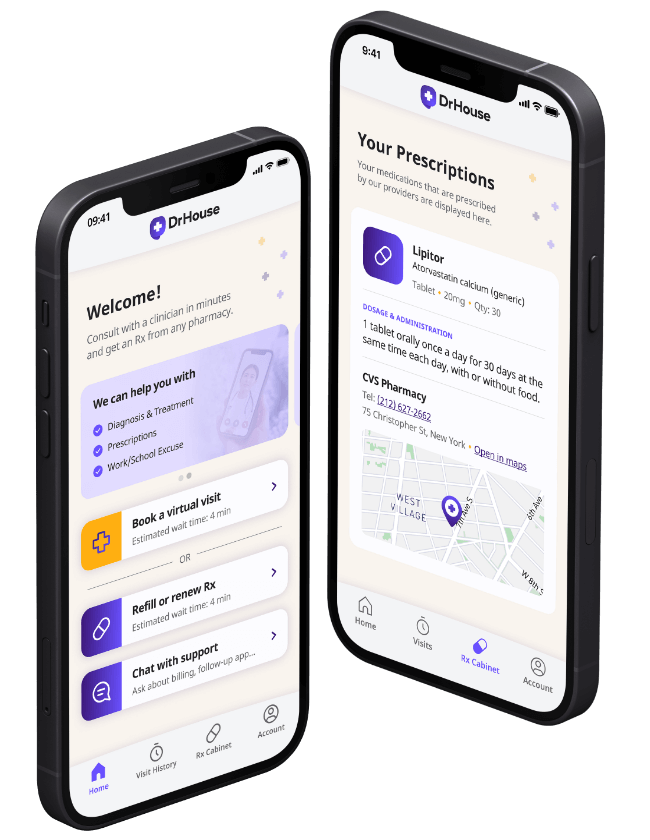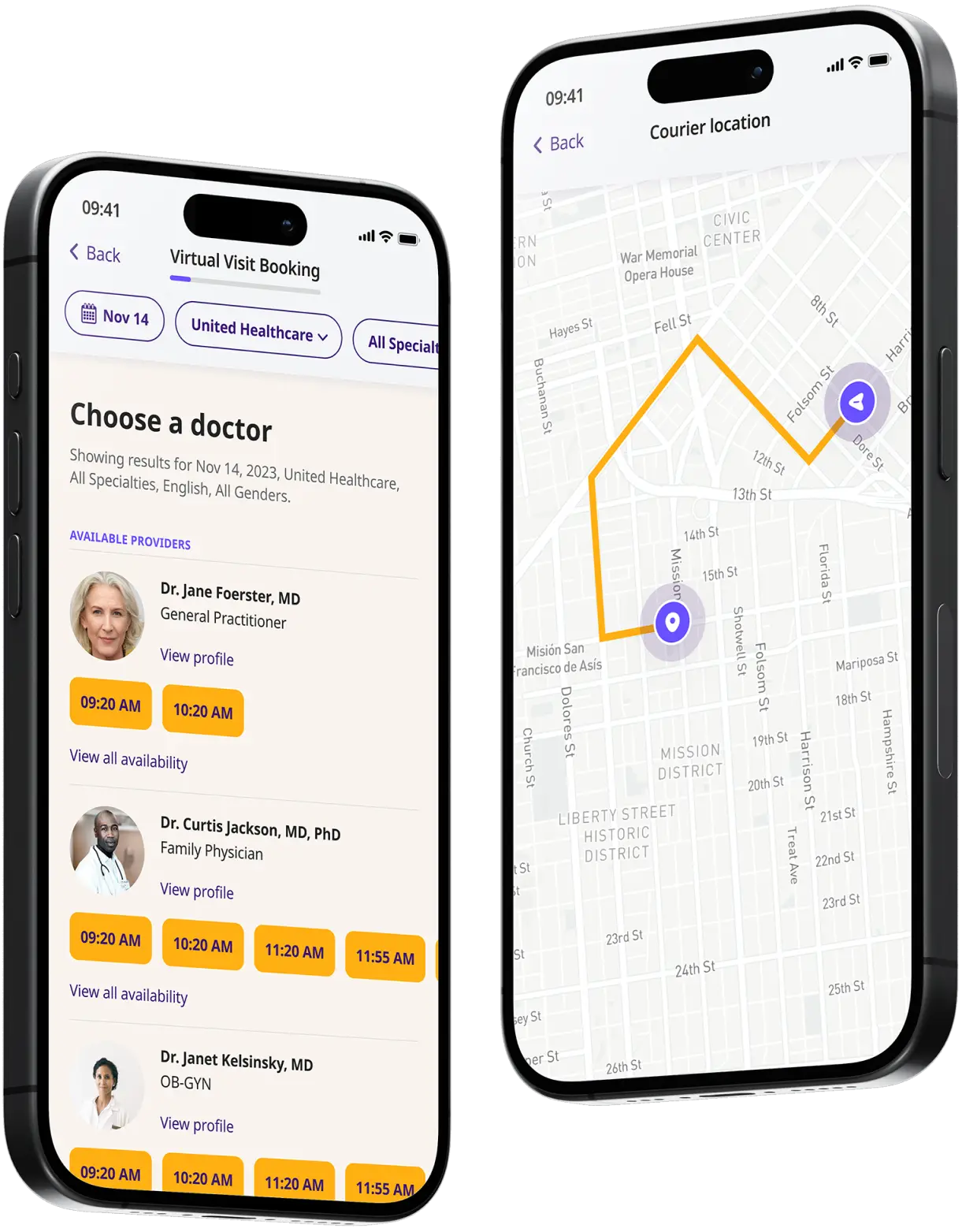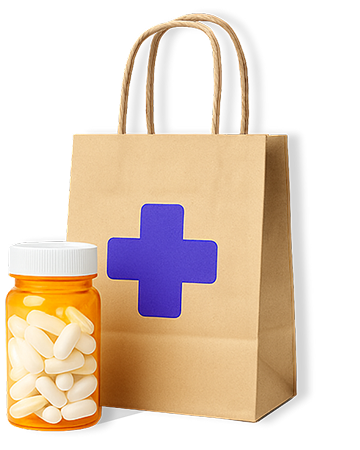Abscess (Boil) Treatment Online
Manage abscesses and boils safely with expert guidance. See an online doctor for fast personalized care and prescriptions.

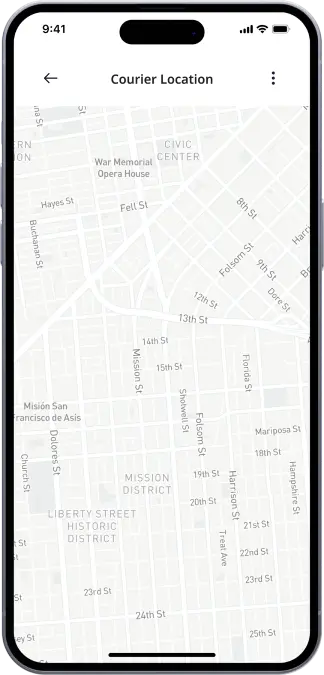
Available in 50 states. Insurance accepted.
Fast
virtual visits
24/7 care
assistants
Prescriptions
as needed

24/7 Personal Care
Consult with a physician in 15 minutes, refill an Rx or chat with our care assistants.

Affordable & Convenient
See your cost upfront and get treatment for hundreds of different conditions.

Insurance Accepted
We accept most major insurance plans, making healthcare easy and affordable.
See If Delivery Is Available Near You
Delivery Not Available
Enter your ZIP code to check if prescription delivery is available in your area and how soon your meds could arrive.
How to get started
Choose your doctor, start a virtual visit, and have your prescriptions sent to your preferred pharmacy for pickup — all in just a few easy steps.
Choose a doctor
Choose a physician by availability, specialty, ratings, and more.
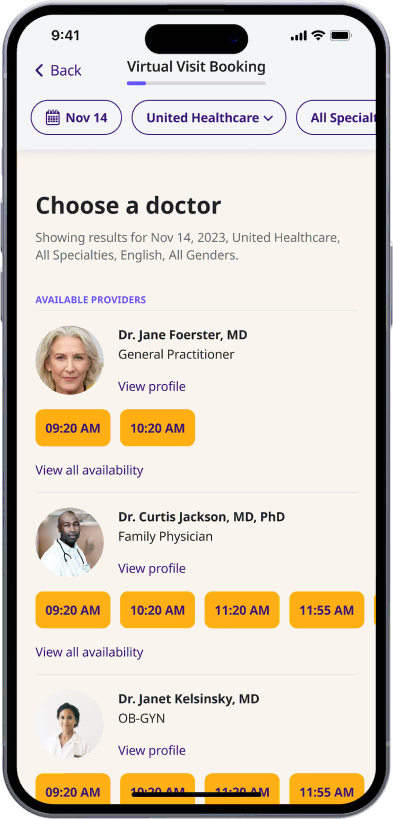
Start your video visit
Connect with a doctor in minutes on a secure video call.

Get your prescription
Pick up your meds or have them delivered in as little as an hour.

Available in 50 states. Insurance accepted.
One-Time
Physician Visit
One-time visit with a physician for diagnosis, treatment, Rx, labs, referrals, and doctor’s notes.
Accepted Insurances
See why people turn to DrHouse...
As seen in

Abscess (Boil) Treatment Online
An abscess, commonly referred to as a boil, is a localized infection in the skin that presents as a swollen, red, and painful lump. This lump is typically filled with pus—a thick fluid containing white blood cells, bacteria, and dead tissue.
Abscesses can develop anywhere on the body but are most commonly found on the face, neck, armpits, buttocks, and thighs.
The condition begins deep within a hair follicle or oil gland. When bacteria enter the skin—usually through a minor cut or a hair follicle—the body’s immune system responds by sending white blood cells to the site to fight the infection. This response creates the pus that fills the abscess.
Abscesses can vary in size, ranging from the size of a pea to larger than a golf ball. Larger abscesses can cause significant discomfort and may affect daily activities.
If left untreated, an abscess can grow, causing increased pain and risk of rupture, and potentially leading to more severe infections.
Prompt and effective treatment is essential for managing abscesses, alleviating pain, preventing complications, and speeding recovery. Medical intervention typically involves diagnosing the severity of the abscess and administering appropriate treatments, which may include antibiotics and surgical drainage.
Symptoms of abscesses (boils)
The symptoms of an abscess can vary depending on the location and severity of the infection. Common signs and symptoms include:
- Redness and swelling: The skin around the infected area usually becomes red and swollen. As the abscess progresses, it may become more prominent and painful.
- Pain and tenderness: The area around the abscess is typically tender to the touch and can become increasingly painful as the infection worsens. The pain often intensifies as the abscess fills with pus.
- Warmth: The skin over and around the abscess may feel warm or hot, which is a sign of inflammation and infection.
- Pus-filled lump: The most characteristic symptom is the appearance of a lump under the skin that is filled with pus. The lump may be soft or firm, and over time, it may come to a head, which means it may form a yellowish-white tip as it fills with pus.
- Fever: In some cases, especially if the infection is severe or spreading, the person may experience a fever.
- Fatigue and discomfort: The body’s immune response to the infection can lead to feelings of general malaise or fatigue.
- Spontaneous drainage: Eventually, the abscess may burst and drain on its own, releasing pus. While this can reduce pressure and pain, medical evaluation is still necessary to ensure the infection is properly treated.
Causes of abscesses (boils)
Abscesses are primarily caused by bacterial infections, the most common culprit being Staphylococcus aureus. However, other bacteria and even fungi can also lead to the formation of abscesses. Here are the primary causes of abscesses:
- Bacterial infection: The skin normally harbors a variety of bacteria, but when these bacteria enter the body through a break in the skin such as cuts, scrapes, or other wounds, they can cause an infection. If the body’s immune system cannot clear these bacteria, an abscess can form.
- Blocked oil or sweat glands: When oil or sweat glands become blocked, they can become infected and develop into an abscess.
- Ingrown hairs: These can cause the hair follicles to become inflamed and infected, leading to the formation of an abscess.
- Compromised immune system: Individuals with weakened immune systems, whether due to conditions like diabetes, chemotherapy, or HIV/AIDS, are more susceptible to infections, including those that lead to abscesses.
- Skin conditions: Certain skin conditions, such as acne and hidradenitis suppurativa, can also predispose individuals to developing abscesses due to the frequent occurrence of inflamed skin glands and hair follicles.
- Exposure to contaminated items: Using or being in contact with contaminated items, such as needles, can introduce bacteria deep within the skin, leading to abscess formation.
- Close contact activities: Activities that involve close contact, such as sports, can facilitate the transfer of bacteria from one person to another, increasing the risk of developing an abscess.
How to treat abscesses (boils)
Treating abscesses effectively is crucial to relieve pain, prevent the spread of infection, and hasten recovery. Treatment strategies may vary based on the abscess’s size, location, and severity.
Here are the common approaches to treating abscesses:
- Warm compresses: Applying warm compresses to the affected area can help the abscess drain naturally by softening the skin and increasing circulation to the area. This should be done several times a day for about 20 minutes at a time.
- Incision and drainage: The most common treatment for larger or persistent abscesses is surgical drainage. A healthcare provider will numb the area with local anesthesia, make a small incision to drain the pus, and then clean the cavity. This procedure significantly reduces pain and speeds healing.
- Antibiotics: While not all abscesses require antibiotics, they may be prescribed if the infection is severe, if there are signs of spreading infection, or if the patient has a weakened immune system. Antibiotics help control and eliminate the bacterial infection.
- Pain relief: Over-the-counter pain relievers, such as ibuprofen or acetaminophen, can be used to manage discomfort associated with abscesses.
- Care for the abscess site: After an abscess has been drained, it’s important to keep the area clean and covered. The healthcare provider may pack the abscess with a sterile dressing to absorb any additional pus and to prevent the cavity from closing too early. Regular dressing changes and follow-up visits may be necessary to ensure proper healing.
- Do not squeeze or pop the abscess: It’s important to avoid squeezing or attempting to pop an abscess, as this can push the infection deeper into the skin and lead to complications.
Medication for treating abscesses (boils)
The use of medications is a key component in the treatment of abscesses, especially when they are severe or recurrent.
The choice of medication largely depends on the nature of the abscess, the severity of the infection, and the patient’s overall health. Here’s a detailed look at the medications commonly used in treating abscesses:
Antibiotics
Antibiotics are not always necessary for treating abscesses, but they are crucial in cases where the infection is severe, there is an underlying health condition, or signs of a spreading infection are present. The type of antibiotics prescribed can vary based on the bacteria suspected of causing the infection. Commonly used antibiotics include:
- Dicloxacillin: Effective against penicillinase-producing staphylococci, which are often responsible for skin infections.
- Cephalexin: A cephalosporin antibiotic used for a wide range of infections, providing good coverage against common pathogens involved in skin infections.
- Clindamycin: Useful in cases where staphylococcal or streptococcal bacteria are involved and is often used for patients allergic to penicillin.
- Trimethoprim-sulfamethoxazole (Bactrim): Often prescribed for its effectiveness against MRSA (methicillin-resistant Staphylococcus aureus), a common cause of skin infections that are resistant to standard antibiotics.
- Doxycycline: Also used for MRSA, particularly in adults, and offers a good alternative to Bactrim.
Pain management
Pain management is an important aspect of treating abscesses. Over-the-counter (OTC) pain relievers such as ibuprofen (Advil, Motrin) and acetaminophen (Tylenol) can be used to reduce pain and inflammation. In cases of severe pain, your healthcare provider may prescribe stronger pain relievers.
Topical treatments
While systemic antibiotics are used for deep or severe infections, topical antibiotics can be applied directly to the skin for minor abscesses. These include:
- Mupirocin: An antibiotic ointment used to eliminate staphylococci from the skin, which can prevent the formation of new infections.
- Retapamulin: A newer topical antibiotic that can be used to treat superficial skin infections.
How can DrHouse help?
As a telehealth platform, DrHouse offers convenient and confidential access to healthcare professionals who can diagnose and treat abscesses through online consultations.
Our team of licensed doctors can provide personalized treatment plans, including prescription medications, lab testing referrals, and specialist referrals if necessary.
With DrHouse, you can receive quality care from the comfort of your own home without having to wait in a crowded clinic or hospital.
Book an appointment today and let us help you manage your abscess effectively. Remember, early detection and treatment are key to preventing complications and promoting faster healing. So don’t hesitate to seek medical advice if you suspect you have an abscess or any other health concern. Your health is our priority at DrHouse.
Related services
Explore more of our services tailored to your needs and discover additional ways we can support your healthcare needs.
Frequently asked questions
